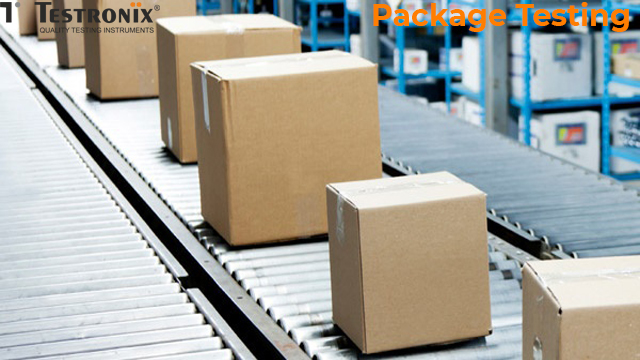Reviewed by Anurag Mishra (Sr. Technical Consultant)

Package Testing – Why, How, Where?
Packaging is available in a whole range of colors, shapes and sizes. Depending on the kind of product the packaging is designed to protect, it can be made by using various materials.
The common types of packaging range from sealed bags which are designed to keep food fresh, and bottles for aerated / non aerated beverages, to biomedical packaging developed to ensure sterility.
Why Conduct Tests for Optimal Packaging?
Since packaging is exposed to various types of stress while being filled, moved, stored, and transported – it is necessary to ensure that the package is strong enough to endure these pressures.
Hence, there are several methods used to test packaging products. Moreover, there are specific tests which can be conducted to evaluate a particular design or material being used.
For example, beverage bottles are subjected to varied material tests such as structural rigidity. These are performed to ensure that they do not rupture during the process of filling, capping or stacking. Also a bursting strength test can be conducted to ascertain the point at which the bottle will fail when it is filled with fluid.
With the help of these tests manufacturers can ensure that their packaging needs are met with. Based on the type of product that they are packaging and the modes of transportation that will be used to deliver it to customers, there are two main stress points in packaging:
Mechanical Strains - are experienced by packages, especially during transportation of goods. These mechanical strains include:
Climatic Stresses - The durability and performance of packaging largely depends upon the climatic conditions that the package is exposed to, particularly during warehousing and transportation.
Regardless of how it may be exposed to these kinds of stresses and strains, there are a number of evaluation parameters and tests designed for the purpose of evaluating the performance of packaging,
How to Conduct Package Testing?
For evaluating that the package is able to withstand the many packaging stresses and strains, the following tests can be conducted:
It is necessary to ensure that bottles can pass through production lines without jamming. Thus, dimensional measurement tests like height and wall thickness are conducted. The wall thickness dimensions are measured at different points of the assembly line to confirm consistent structural integrity.
Top Load Test
Since bottles are generally stacked one above the other before being shipped on pallets, a top-load test is needed. This is performed to check the rigidity and for ensuring that the bottle can withstand such stacking pressures.
Peel Strength Test
While packaging for foods such as cookies, potato chips, cereal and yogurt seals are applied to the package. Seal can be done through applying ‘pressure seal’ or it may be adhered together. In either case, it is important to evaluate the seal strength. So, these packages are tested comprehensively to guarantee proper performance.
However, if the seal strength is too high then, sometimes snack bags often rip open instead of the seal. This leads to the food to fall out of the bag. This reason behind this is that the seal is far stronger than the material of the bag which is sealed together.
In order to avoid this kind of situation, peel testing is conducted. The peel strength test is conducted by pulling apart the seals, for determining their strength. The test results provide valuable information used for checking and evaluating the structural integrity of the package, especially when stress forces are applied to it.
Burst Strength Test
In case of food packages, it is necessary to ensure that the food products in the bag remain fresh and are not damaged if a force is applied, specially, when bags are packed together or stacked.
In order to check integrity of the package, bursting strength testing is performed. The sealed bag is compressed between two plates and then, the maximum force applied just before the bag bursts, is observed and recorded.
Conclusion
These material and quality control tests can help manufacturers to ensure that their packaging enables their product to maintain its freshness, while protecting the contents completely. Often, these tests are also used to dictate the ‘use by’ day that is commonly included on packaging.
Testronix Instruments is the one stop shop for the best packaging testing machines and equipment in India. For further assistance, please visit www.testronixinstruments.com or call +91-9313 140 140 for more details and customization of the equipment.